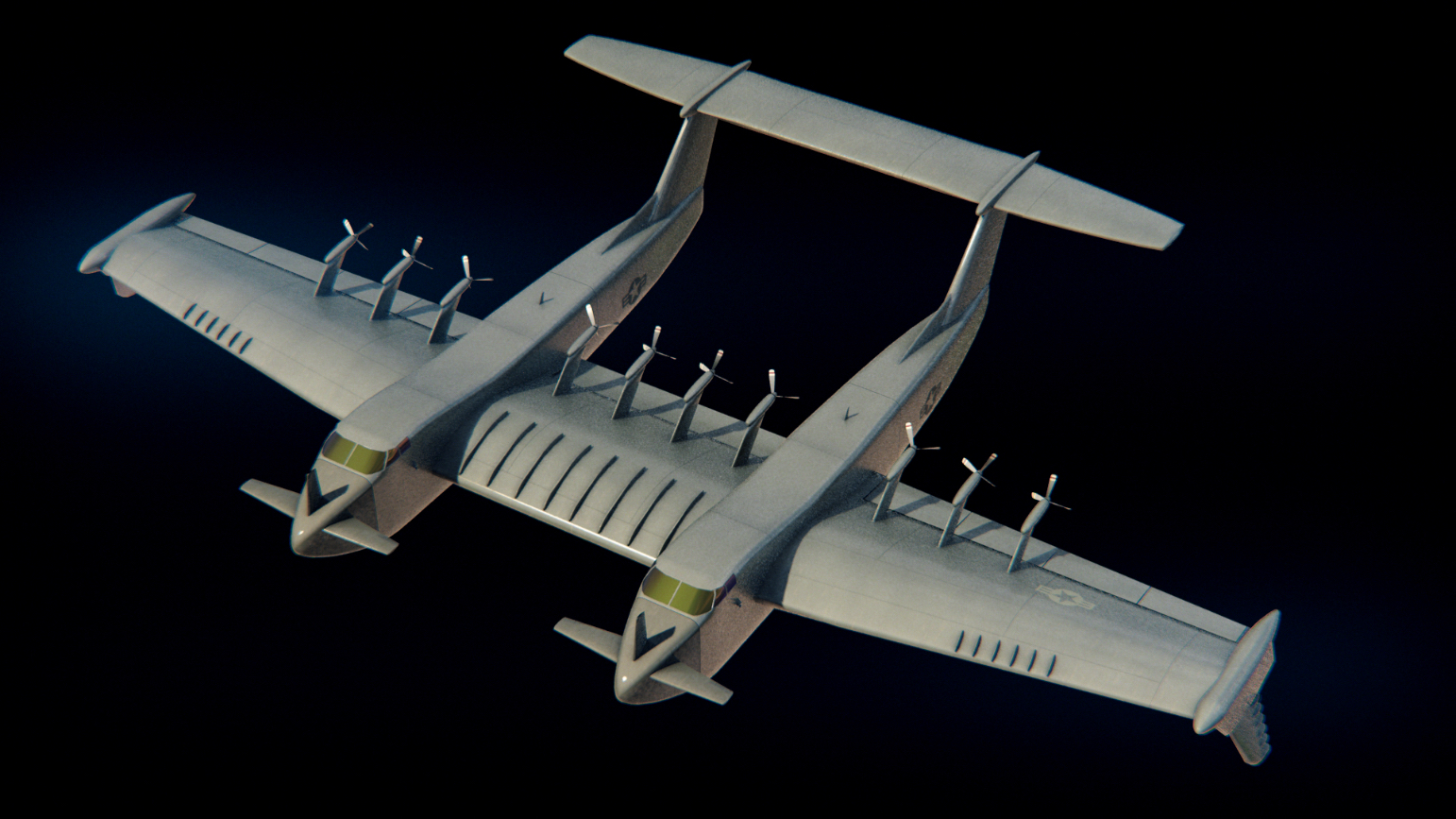

To land on beaches in the future, DARPA is pursuing a type of very large seaplane popularized by the Soviet Union. In a video shared May 18, the Pentagon’s blue sky projects wing envisions an ultra low-flying “Liberty Lifter” as a capable transport and cargo plane for getting goods to shore efficiently in places without a ship-friendly port.
To understand why this branch of the DOD is interested in such a craft, it first helps to consider a phenomenon called “wing-in-ground effect.”
“There is a history of attempting to develop aircraft created to fly with ‘wing-in-ground effect,’ which means the aircraft is flying no more than the length of its wingspan above ground or water,” reads the DARPA release. The Soviet Union developed vehicles on the same principle called “ekranoplans”—seaplanes like this could go fast and take off and land without runways, but were restricted to calm seas and couldn’t really maneuver much.
There’s a host of reasons why it’s generally a bad idea for planes to fly close to the surface, starting with the fact that there’s more exposure to the weather and likely a higher risk of crashing. But ground-effect aircraft, like ekranoplans and DARPA’s planned Liberty Lifter, take advantage of the benefits of being low.
In normal flight, wrote Bill Sweetman for Popular Science in 2003, “at the lateral tip of the wing, the high pressure air underneath flows around to the upper surface. This creates a vortex, a rotating airflow that robs the wing of lift. But if the aircraft is flying very close to the surface, there is no room for the vortex to develop properly and it becomes weaker.” (Avoiding those tip vortices on wings is another reason why winglets exist, and why aerospace engineers prefer long, slender wings for better efficiency.)
The potential of the wing-in-ground effect was visible from the earliest observations of ekranoplans. Popular Science first covered the jet-powered ekranoplan in 1977, claiming it was designed for anti-submarine warfare and could reach a top speed of 350 mph. The craft featured eight jet engines mounted on a forward canard, high on the plane’s fuselage, which let their exhaust deflect down towards the surface of the sea. The Russian craft, PopSci wrote, “gets lift from [an] air bubble caused by jet blast bouncing off water beneath its main wings.”
[Related: The Navy tested a laser that could defend ships from missiles]
DARPA’s new Liberty Lifter draws its name from the “Liberty Ships” of World War II, the cargo transports mass produced for use in the war and as merchant vessels afterwards. The agency doesn’t just want its “Liberty Lifter” concept to fly by novel means, but it wants whoever builds the plane to do so in an affordable and scalable way.
In military use, Liberty Lifters are envisioned as delivering troops, vehicles, and cargo to coasts without the infrastructure to dock and unload goods normally. This could be to support relief missions after a disaster, or facilitate an invasion with light armored vehicles full of marines rolling through tidal flats to objectives further inland.
[Related: A helicopter caught and released a rocket this week]
Seeking to fly beyond the limits of Soviet ekranoplans, DARPA would like the Liberty Lifter to be able to operate like a traditional airplane over rough seas, even reaching altitudes of up to 10,000 feet. That should help the Liberty Lifter reach waterways further inland, possibly even traveling to and operating from lakes.
Before there was the Liberty Lifter, the US looked for a way to adapt ekranoplan innovation to its own needs. Even if the models built had limits, there is a lot of potential in, as Sweetman wrote, an airplane using ground effect to “fly on less power, using less fuel, than one at high altitude.”
In 2003, Boeing actually explored creating the Pelican, a giant cargo plane that could fly like a conventional aircraft, but would mostly fly low to the sea, supported and propelled by wing-in-ground effect and also the thrust of jets angled towards the water’s surface. The Pelican concept was truly monstrous, with an envisioned 500-foot wingspan, 400-foot length, and 29,000 square feet of cargo hold across two decks, capable of carrying 17 M1 Abrams tanks and dozens of cargo containers. The concept was later abandoned.
Watch a video about the Liberty Lifter below:

